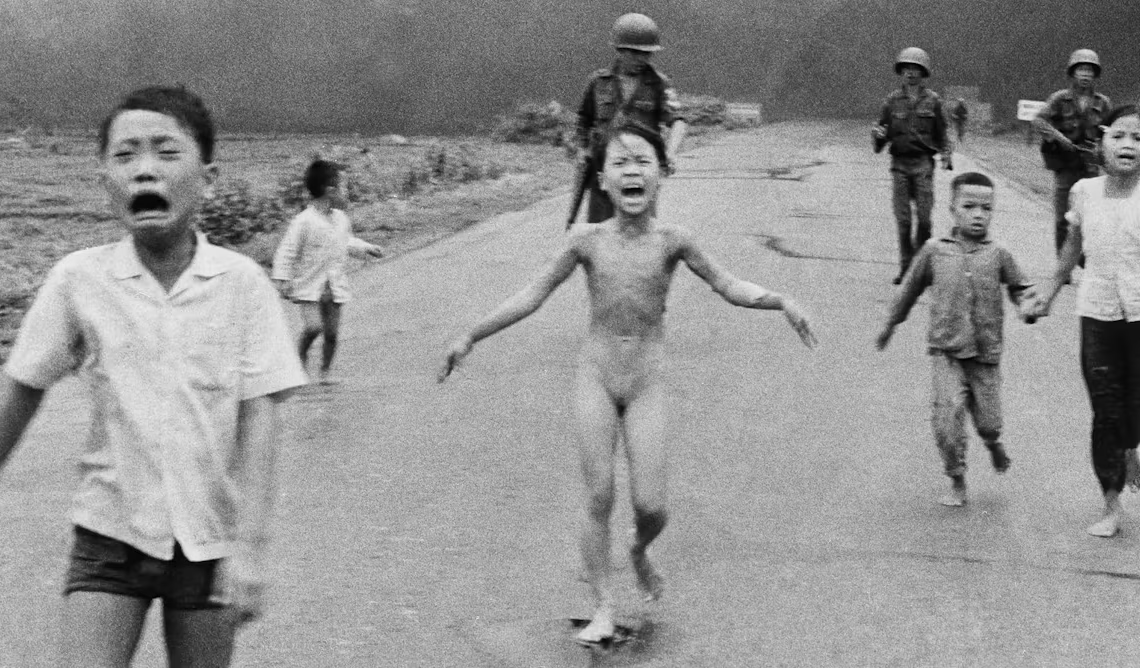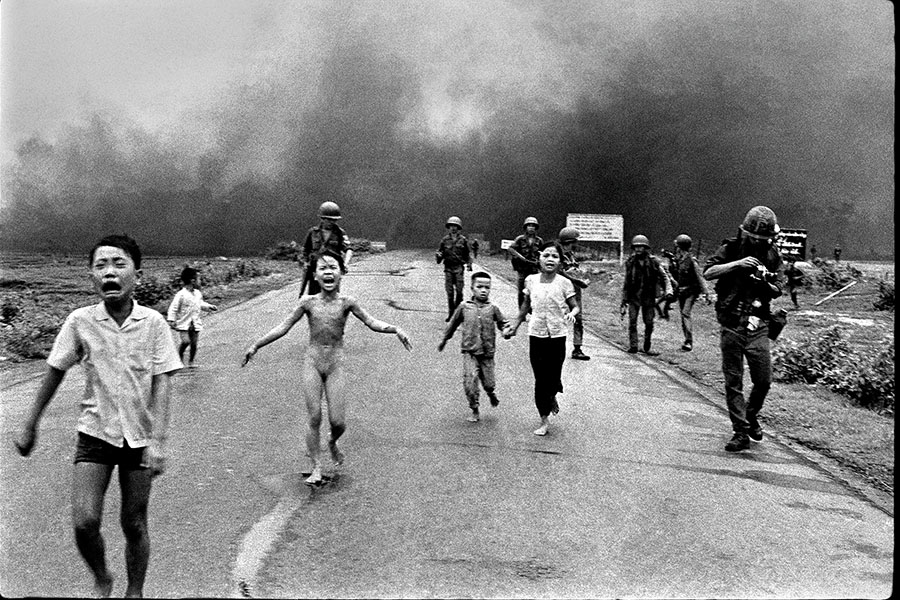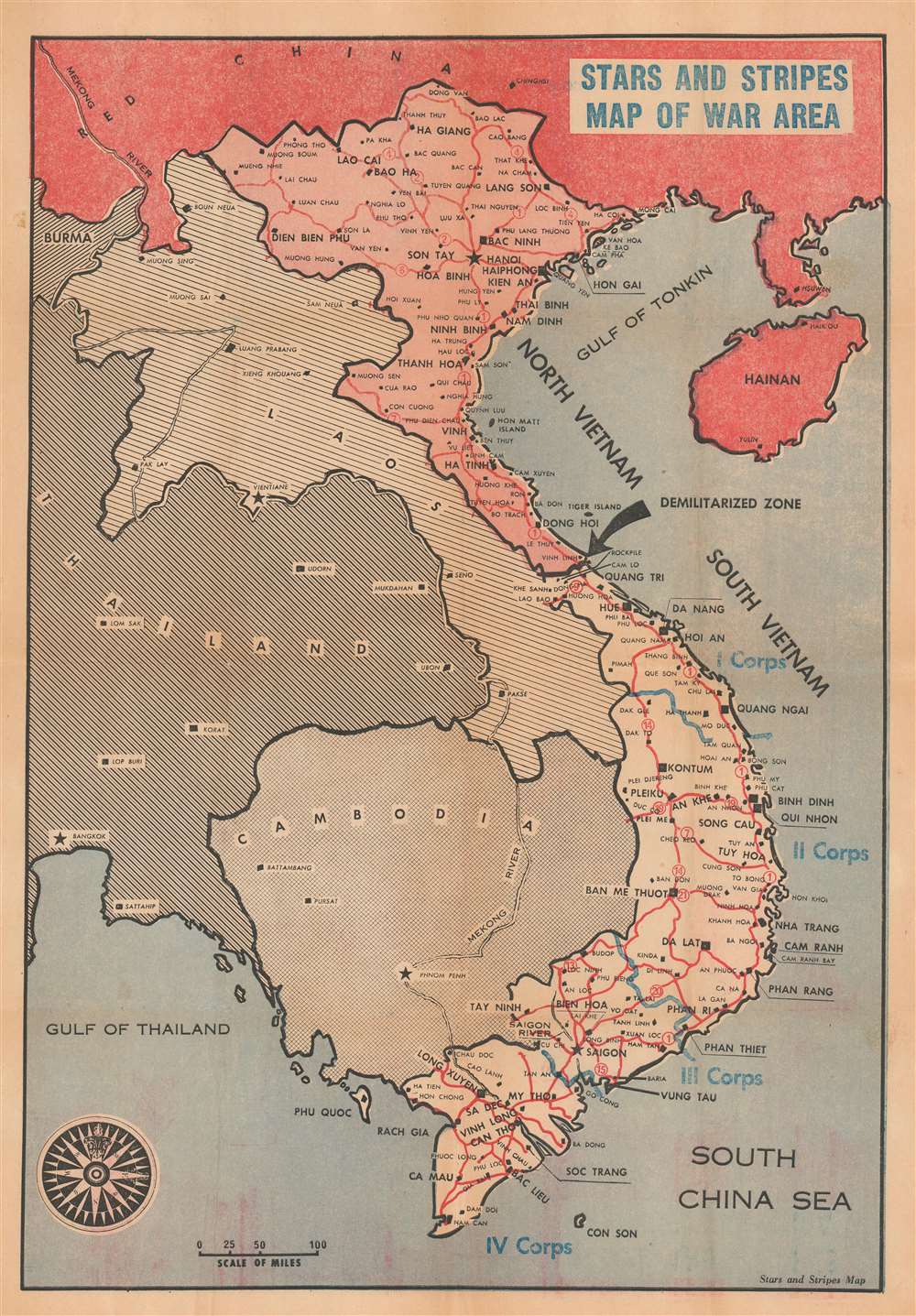
After the two world wars, a general understanding was formed against the war, but despite that several wars, although not at that big scale, but did take place under the bracket of the Cold War. Whether it is the Korean war, the Iraq war, the Cuban Missile Crisis, or the episode in Afghanistan. But the war, which is the most famous and has its name etched to the deepest extent in history is the chapter of the Vietnam war in Indo-China. The war for several reasons holds a crucial spot in world history. Today, in this article I would try to explain the whole chapter with detail and clarity.
The History of Indo-China
Firstly, Indo-China refers to the area comprising three countries, Vietnam, Laos and Cambodia. The whole conflict of the Vietnam War occurred in Indo-China, from 1945-75 in two phases. However, the people of Vietnam still consider the whole war as just ‘one phase’ that was fought against the ‘imperialist’ powers. It was officially fought between North Vietnam and South Vietnam, where the former was backed by the Communist regimes of the USSR and China, and the latter was backed by the US, along with other allies (UK and France).
In the colonial era, France gained control of Vietnam in the latter half of the 19th country. From 1883-1939, it controlled Vietnam as a Protectorate and from 1939-45 as a complete possession. Now, after the second world war ended with Japan’s surrender, and slowly all the colonies across the world started getting independent, the nationalist leaders of Vietnam too stressed their point of gaining complete independence.
A Map of the Vietnam region from the war period (Photo credit: Geographicus Rare Antique Maps)
Vietnam’s demand for Independence
Under the leadership of Ho Chi Minh, Vietnam proclaimed and demanded independence in 1945. But, the French straightaway refused the demand. The reason was it along with other allies like the US and UK was reaping the benefits of cheap labour and other food industries (like rice) set up in Vietnam. So, it didn’t want to leave all that so easily. Now, this conflict led to the locals under the leadership of Minh, starting guerilla warfare against the French forces. Incidentally, the attack from Vietnamese locals came at a time, when France had got very weak economically after the two world wars.
So, after struggling for 10 long years, the US made France back out of the tussle and itself entered the game. The first phase of the war (between Vietnam and France) ended in 1954 at Dien Bien Phu, after which a treaty was signed at the Geneva Conference in 1954. Under the treaty, Vietnam was divided into two parts, just like what happened in Korea. The division was made at the 17th parallel of latitude (17 degrees north latitude). The upper half was named ‘North Vietnam’ and the lower half was ‘South Vietnam’.

One of the most disturbing photos from the war, which played a huge role in shifting sentiments
The New Structure of Vietnam
In the north Vietnam region, it was the ‘Communist’ China that had control, whereas, in the south Vietnam region, it was the Allies (France, UK, US), mainly the US who had control. Hanoi was the capital of North Vietnam or the Democratic Republic of Vietnam backed by China, and Saigon was the capital of South Vietnam or the Republic of Vietnam backed by the USA. But, here the division was not going to be as easy as was in the case of Korea, because both ideologies wanted to install theirs throughout Vietnam.
From North Vietnam’s side, two major forces were fighting against the US-backed forces. One was the People’s Army of Vietnam or the North Vietnamese Army (NVA) which was fighting in conventional style, and the second was the Viet Cong which was carrying out guerilla warfare. Laos and Cambodia, these two regions were being used by the North Vietnamese front for carrying their logistics, ammunition and food. Now, because the Viet Cong members used to dress just like normal civilians, it was not easy for the US forces to differentiate between the two. So, guess what solution the US came out with. It started bombing the villages and forests in bulk, killing innocent civilians in huge numbers.
Gulf of Tonkin
As a major turn of events in the war, in 1964, the US naval force was trying to enter Vietnam by water. As a result, the North-Vietnamese army retaliated, resulting in one US warship sinking. The US had just gotten the ‘much-needed’ reason to intensify its offensive. Although, it was quite a normal thing to do for any army to attack the warship approaching its borders. But, the US tried to portray itself as the ‘victim’. It started building a narrative that the US is ‘compelled’ to intensify its attacks because its naval warship has been attacked. The US brought the Gulf of Tonkin resolution, which gave the government, the power to increase its military presence in Vietnam. The US offensive peaked in 1968, which resulted in heavy killings and bloodshed across Indo-China.

Photo credit: A still from the time of TET OFFENSIVE (Photo credit: The Washinton Post)
Tet Offensive
Another major breakthrough in the war came when the NVA and Viet Cong, aiming to reunify Vietnam, carried out several ‘Surprise Attacks’ throughout the US-dominated South Vietnam region. It caught the US and the South Vietnamese military completely off-guard and damaged it severely. In a way, it broke the whole backbone of the US offensive in Vietnam. This set of events is known as ‘Tet Offensive’. Although, the main aim of the Tet Offensive was to completely overthrow the South Vietnamese regime, which didn’t happen. But, it turned out to be the ‘Turning Point’ in the war. Because now it started becoming clear to the US public that the US is NOT winning in Vietnam.
The Change in Politics
Although the US had sent its army, it also needed consensus among the Congress (US Parliament) and the US public. The US government which was throughout building the narrative that the US is doing wonders in Vietnam now stood exposed in front of the public. Public opinion now started going against the war, and the pressure started mounting on the government. Ultimately, one of the core poll promises of President Richard Nixon was the withdrawal of US troops from Vietnam and the halting of war.

The press came under attack for exposing the US government’s lies (Photo credit: Washington Post)
US Withdrawl and Vietnamisation
Nixon’s plans of stopping the war were two folded. Firstly, he intensified attacks on North Vietnam and secondly, in a major step, he started negotiating with China and USSR, persuading them to withdraw their support, promising that the US too will follow the suit. By 1969, the US started withdrawing forces, But, for the cause of some ‘self-respect’, it started doing ‘Vietnamization’. Under this, the US was training the South Vietnamese forces with arms and logistics to combat the Northern counterparts. The US also got all its prisoners of war and deceased soldiers back.
The US also recognised the Communist government in the ‘Hanoi’ region. Under President Kissinger, the US tried to make both North and South Vietnam sign a treaty. Although the South didn’t want to sign it, the US pressurised it to sign it, threatening withdrawal of whatever little support it is giving now. So, we can see that all US wanted was a ‘graceful’ exit, something like what we saw recently in Afghanistan. The treaty was eventually signed in 1973.
The End Result and Aftermath
But even after the treaty, the war continued between the two Vietnams. Although the US had promised that it will ‘intervene’ if the North raises an offensive in the South. But, by the time it actually happened, the US got so messed up in its internal politics and that famous Watergate scandal, that it could not intervene any further in matters. Also, the US didn’t have the energy or ‘grace’ left to carry out everything all over again.
Finally, the truce signed in 1973, couldn’t last long as, by 1975, the whole government of South Vietnam collapsed. It happened after the North intensified its attacks in the Central Highlands region and rolled out the tanks as far as the presidential palace in the South. Finally, North Vietnam was able to establish full control and a Communist regime in South Vietnam. In this way, all the efforts, economic loss and human casualties that took place went into VAIN.
The Role of Media
It is one of the episodes, where we got to see the real role that the media plays in democracy. As I said, the US was throughout trying to build teh consensus that it has entered the war just to ‘protect’ democracy in Vietnam. The US media, especially the names like Washington Post and New York Times, were constantly putting forward the ‘real’ ground reports. It showed that the US offensive is leading to the killing of thousands of innocents. Also, the public started realising that despite all teh violence, the US is not in a good position and is actually struggling there. All of this helped in building pressure on the government to stop teh war. I would also recommend everyone, a movie to witness the role of media in the episode titled THE POST.

Protests in US demanding stoppage of war in Vietnam (Photo credit: The Washington Post)
A Chapter with several lessons
The Vietnam war was perhaps the only major war, where the US lost (officially), and the reason was quite obvious. Although the US did send huge troops and ammunition, it had little to no idea about the local area and terrain in Vietnam. Whereas, the Viet Cong and NVA were able to execute their plans as per the requirement of the area. All this resulted in the US losing the war despite fighting for 20 years. it showed that just starting a war, by developing hyper-nationalist feelings in the country, is not enough. As I said above, the US losing this war meant that all the money, effort and soldiers that were sacrificed, were all in vain.
Ultimately, the regime the US sacrificed so much fighting, was established in Vietnam. The war also left a long-term impact, especially on the US soldiers, many of whom were left depressed. It shows that despite how much the US and the West preach to the world about peace, how active they have themselves been in starting and fighting wars, just in the name of the ‘Anti-Communist’ agenda. It also shows how dangerous thing ‘greed’ and ‘ideology’ can turn out when it gets on the top of your head. It shows the impact, war has on humanity, and on everybody directly or indirectly involved in it.


